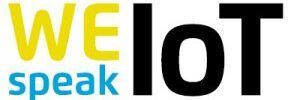Asked if it’s better to go for a cloud- or rather an edge-based IoT solution, the answer is, as so often in life: It depends. But lets take a step back first and define what we mean when talking about cloud, edge or fog computing.
May ways lead to Rome, more lead tot he perfect IoT-Solution. In this section we emphasize on different technology approaches in the Internet of Things.
Asked if it’s better to go for a cloud- or rather an edge-based IoT solution, the answer is, as so often in life: It depends. But lets take a step back first and define what we mean when talking about cloud, edge or fog computing.
In the long run, the Internet of Things will only be successful if we manage to connect all the different devices in a very uncomplicated manner. Currently, the lack of interoperability is hindering widespread usage. A common language could be a solution and the devices itself have to become more intelligent. A biological organism carries in each cell the complete genotype with individual “working instructions”. This could be a paradigm for the Internet of Things.
With the Lemonbeat Device Development Kit (DDK) we offer companies a tool for an easy entry into the Internet of Things. The actual fourth revision of our DDK offers prevalent functions to easily connect own products in an intelligent way via the Lemonbeat smart Device Language (LsDL).
One big challenge in the world of IoT will be to ensure devices from a range of different vendors to collaborate smoothly. One solution, and one that has proven the most popular up until now, is to connect each single device with a cloud service, collect the data and let a remote computer decide what to do next. But this is not always a very elegant way of doing things. First of all, you may need to tie in a number of gateways to collect data from the different devices which may all use different protocols. Secondly, by sending everything into the cloud first, you run the risk of higher latency. Thirdly, if the cloud server stops working or a glitch with the internet connection, the whole system may grind to a halt.
Whenever you attend IoT events these days, there’s one question that is always debated intensively. Do we really need a common standard for the Internet of Things, or are we fine with what we have? While some say we have already got what we need and the rest can be done with gateways, others passionately advocate for horizontal standardization. At the annual M2M Summit of the German based M2M Alliance in Düsseldorf, the discussion continued.
